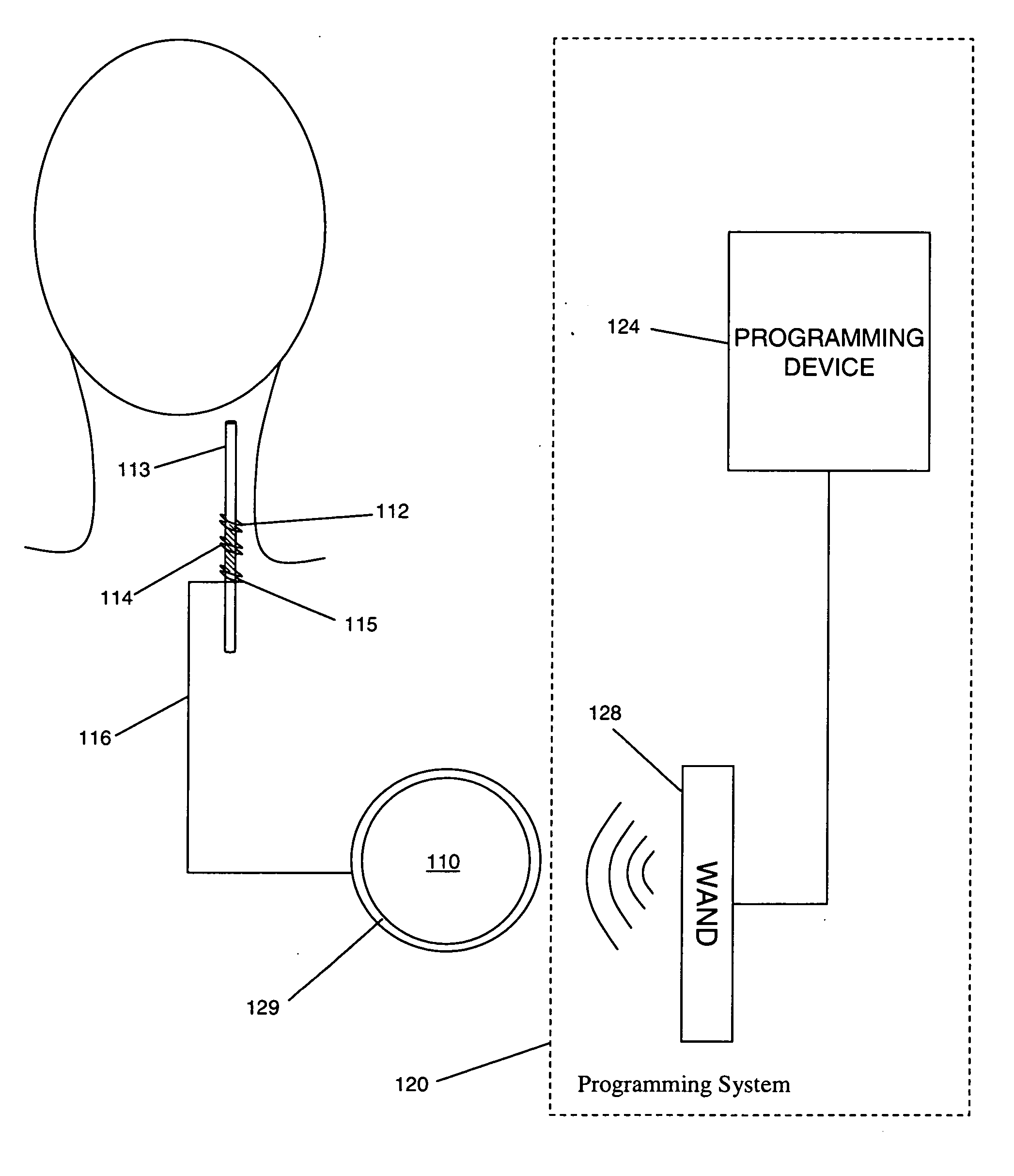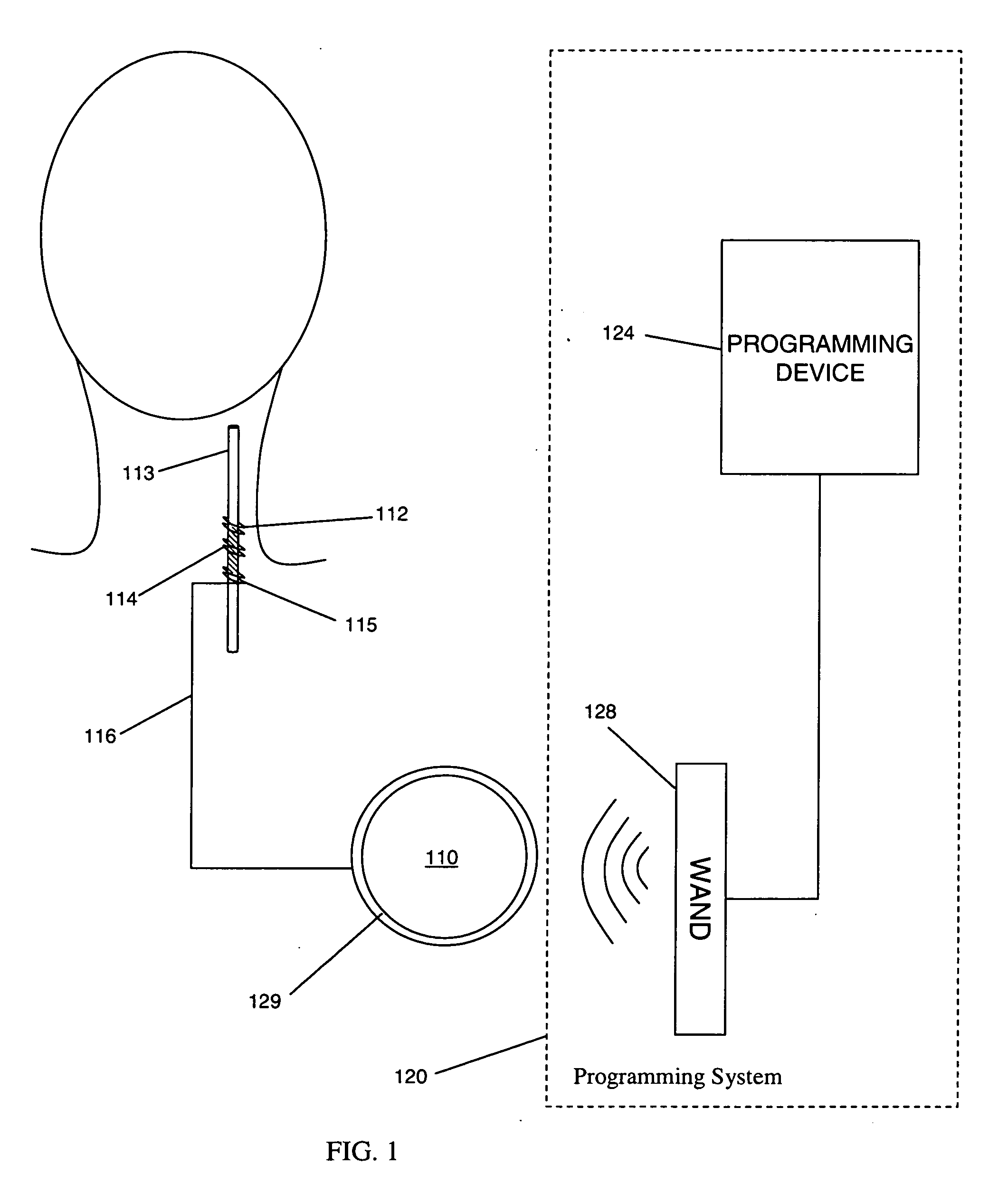Compensation reduction in tissue stimulation therapy
a tissue stimulation and compensation technology, applied in electrotherapy, therapy, etc., can solve the problems of patients, time-consuming, expensive, and general undesirable, and achieve the effect of reducing or preventing the body and similar therapeutic benefits
- Summary
- Abstract
- Description
- Claims
- Application Information
AI Technical Summary
Benefits of technology
Problems solved by technology
Method used
Image
Examples
Embodiment Construction
[0015] The present invention is susceptible to implementation in various embodiments. The disclosure of specific embodiments, including preferred embodiments, is not intended to limit the scope of the invention as claimed unless expressly specified. In addition, persons skilled in the art will understand that the invention has broad application. Accordingly, the discussion of particular embodiments is meant only to be exemplary, and does not imply that the scope of the disclosure, including the claims, is limited to specifically disclosed embodiments.
[0016] The following description is presented largely in terms of vagus nerve stimulation (“VNS”). However, the disclosure and claims that follow are not limited to VNS, and may be applied to the delivery of an electrical signal to modulate the electrical activity of other cranial nerves such as the trigeminal and / or glossopharyngeal nerves, or to other neural tissue such as one or more brain structures of the patient, spinal nerves, a...
PUM
 Login to View More
Login to View More Abstract
Description
Claims
Application Information
 Login to View More
Login to View More - R&D
- Intellectual Property
- Life Sciences
- Materials
- Tech Scout
- Unparalleled Data Quality
- Higher Quality Content
- 60% Fewer Hallucinations
Browse by: Latest US Patents, China's latest patents, Technical Efficacy Thesaurus, Application Domain, Technology Topic, Popular Technical Reports.
© 2025 PatSnap. All rights reserved.Legal|Privacy policy|Modern Slavery Act Transparency Statement|Sitemap|About US| Contact US: help@patsnap.com



